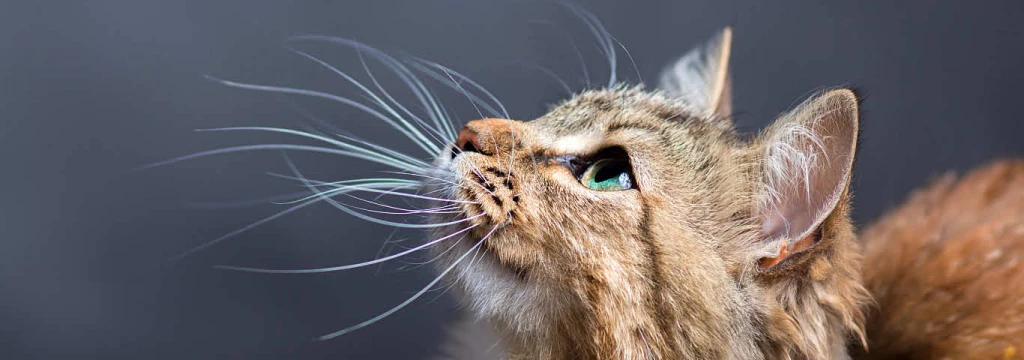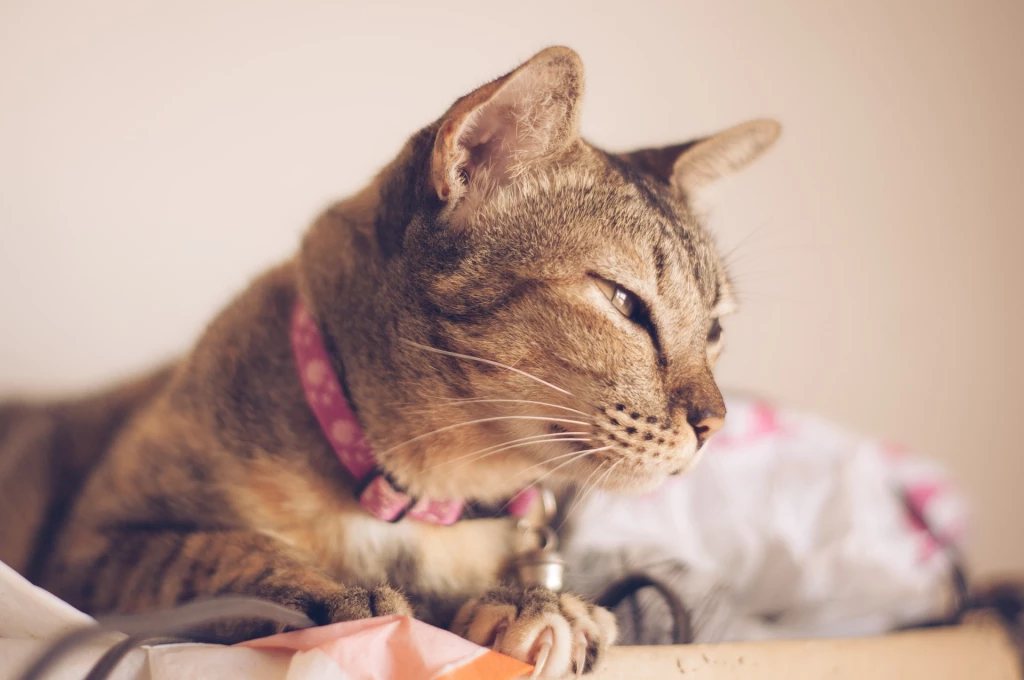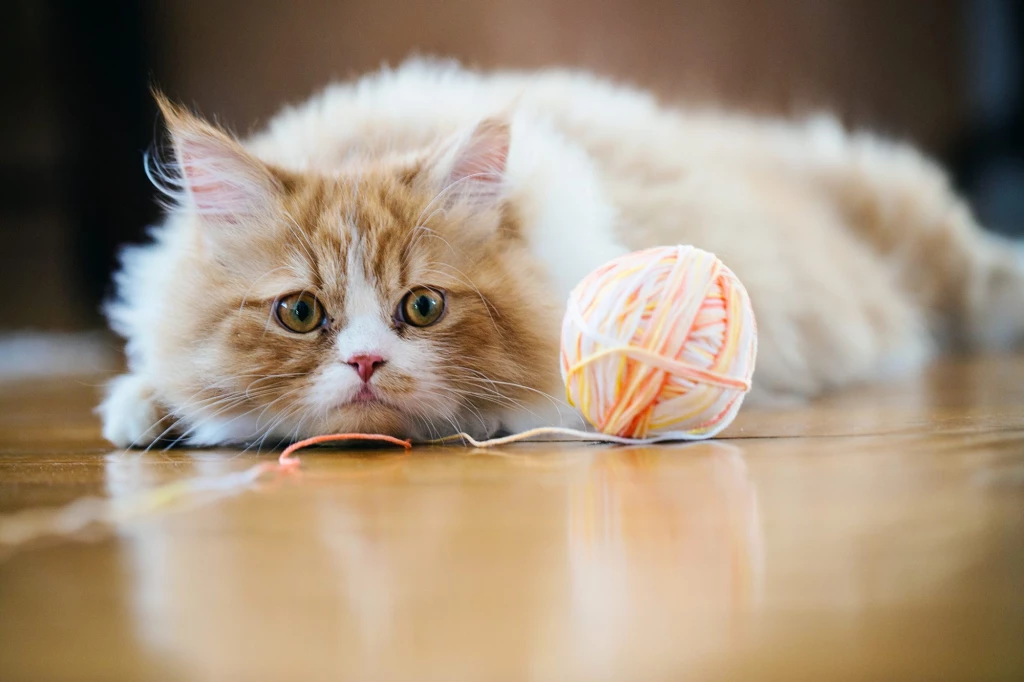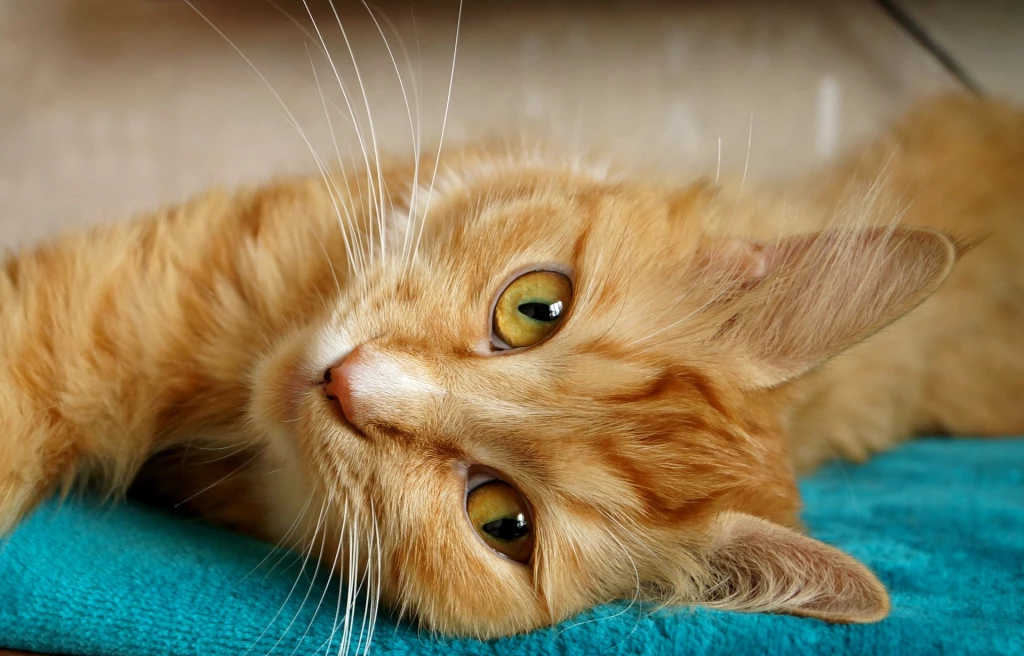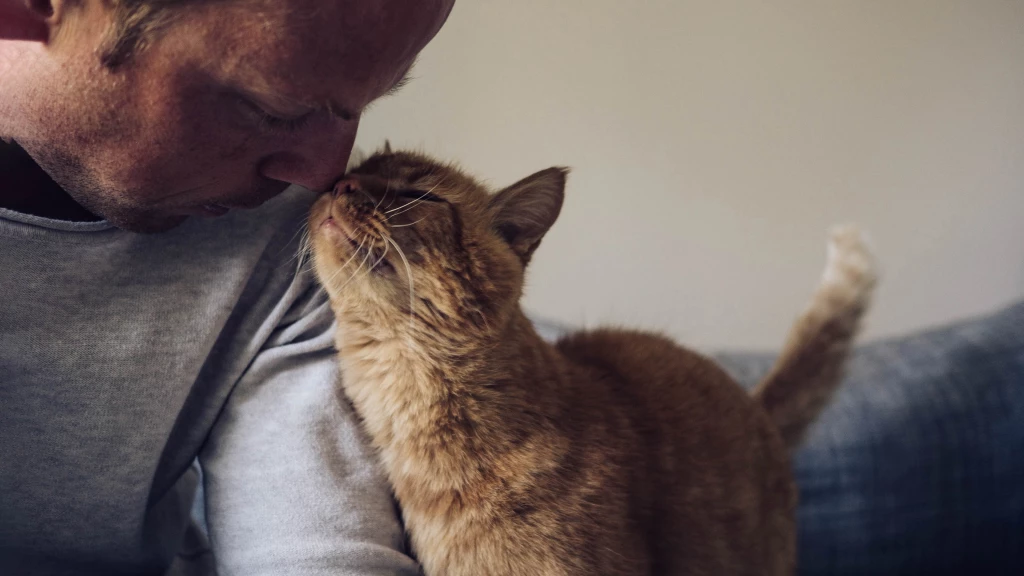Have you ever wondered why your cat's whiskers are so long? Or maybe you have noticed that some cats have longer whiskers than others. What is the purpose of these long hairs that grow on your cat's face and body? And how should you care for them?
Cat whiskers are not just for show. They are actually amazing sensory organs that help your cat interact with their environment in various ways. Cat whiskers can help your cat sense nearby objects and catch prey, measure the width of an opening, orient themselves, and communicate their emotions.
In this blog post, we will explore the fascinating world of cat whiskers. We will answer some common questions about cat whiskers, such as:
- What are cat whiskers and why do cats have them?
- How many whiskers do cats have and where are they located?
- How do cats use their whiskers to interact with their environment?
- How to care for your cat's whiskers?
By the end of this blog post, you will have a better understanding of why your cat's whiskers are so long and how they help your cat live their best life.
What Are Cat Whiskers and Why Do Cats Have Them?
Cat whiskers are not just ordinary hairs that grow on your cat's face. They are actually specialized sensory organs that help your cat navigate and communicate with their surroundings. Cat whiskers are made of keratin, the same protein that forms your cat's fur, claws, and nails. However, unlike fur, cat whiskers are attached to hair follicles that are rich in nerve endings and blood vessels. These nerve endings send signals to your cat's brain whenever their whiskers touch something or detect a change in air pressure.
Cat whiskers have many important functions for your cat. They help your cat:
- Sense their environment: Cat whiskers act like antennas that pick up vibrations and air currents from nearby objects, animals, or people. This helps your cat avoid obstacles, especially in the dark or in tight spaces. It also helps your cat hunt more efficiently by sensing the movements of their prey.
- Orient themselves: Cat whiskers can tell your cat how they are positioned in relation to the ground. This helps your cat balance themselves and land on their feet when they jump or fall.
- Communicate their emotions: Cat whiskers can move slightly thanks to tiny muscles at their base. This allows your cat to express their mood or intention by changing the position of their whiskers. For example, when your cat is relaxed, their whiskers are usually spread out to the sides. When your cat is curious or excited, their whiskers point forward. When your cat is scared or angry, their whiskers flatten back against their face.
As you can see, cat whiskers are essential for your cat's well-being and survival. That's why you should never cut or trim your cat's whiskers, as this can cause them pain and confusion. You should also avoid touching your cat's whiskers unless they initiate contact, as this can overstimulate them and make them uncomfortable.
How Many Whiskers Do Cats Have and Where Are They Located?
You may have noticed that your cat has whiskers on their face, but did you know that they also have whiskers on other parts of their body? In fact, cats have whiskers in several strategic locations that help them sense and explore their environment. Let's take a look at how many whiskers cats have and where they are located.
The most obvious whiskers are the ones on your cat's upper lip, also known as the mystacial whiskers. These are the longest and most prominent whiskers that your cat has. Most cats have four rows of three whiskers on each cheek, which comes to 12 on each side. However, some breeds may have more or fewer whiskers depending on their genetics.
Your cat also has whiskers above their eyes, called the supraorbital whiskers. These whiskers help your cat protect their eyes from dust, debris, and insects. They also help your cat detect changes in light and shadow. Most cats have three whiskers above each eye.
Another set of whiskers are located near your cat's ears, called the genal whiskers. These whiskers help your cat sense vibrations and sounds in their surroundings. They also help your cat orient themselves when they tilt or turn their head. Most cats have two or three whiskers near each ear.
Your cat also has whiskers on their chin, called the mandibular whiskers. These whiskers help your cat feel objects and textures with their mouth. They also help your cat groom themselves and other cats by sensing where to lick. Most cats have a few short whiskers on their chin.
Finally, your cat has whiskers on their forelegs, called the carpal whiskers. These whiskers are located on the back of the wrists and are often overlooked. These whiskers help your cat sense the position and movement of their prey when they catch it with their paws. They also help your cat climb and balance on uneven surfaces. Most cats have a few carpal whiskers on each leg.
As you can see, cats have a lot of whiskers all over their body. The exact number and location of whiskers may vary among individual cats and breeds, but most cats have around 24 mystacial whiskers, 6 supraorbital whiskers, 4-6 genal whiskers, a few mandibular whiskers, and a few carpal whiskers. That adds up to around 40-50 whiskers in total!
How Do Cats Use Their Whiskers to Interact with Their Environment?
Cat whiskers are not just for decoration. They are actually amazing tools that help your cat interact with their environment in various ways. Cat whiskers can help your cat:
- Detect nearby objects and catch prey: Cat whiskers are attached to tissues that have multiple nerve endings. These nerves are sensitive to even the slightest movement of air. This means that your cat can use their whiskers to sense the presence and location of objects or animals around them, especially in low-light conditions. This helps your cat avoid obstacles, find their way in the dark, and hunt more efficiently by sensing the movements of their prey.
- Measure the width of an opening: Cat whiskers are usually as long as your cat's body width. This helps your cat determine whether they can fit through a narrow space or not. Your cat will use their whiskers to touch the sides of an opening and gauge its size before they attempt to go through it. This prevents your cat from getting stuck or injured by squeezing into a too-small gap.
- Orient themselves: Cat whiskers can also tell your cat how they are positioned in relation to the ground. This helps your cat balance themselves and land on their feet when they jump or fall. Cat whiskers can also help your cat sense vibrations and sounds in their surroundings, which can help them orient themselves when they tilt or turn their head.
- Communicate their emotions: Cat whiskers can also move slightly thanks to tiny muscles at their base. This allows your cat to express their mood or intention by changing the position of their whiskers. For example, when your cat is relaxed, their whiskers are usually spread out to the sides. When your cat is curious or excited, their whiskers point forward. When your cat is scared or angry, their whiskers flatten back against their face.
As you can see, cat whiskers are essential for your cat's interaction with their environment. They provide your cat with valuable information that helps them navigate, hunt, measure, orient, and communicate.
How to Care for Your Cat’s Whiskers?
Cat whiskers are very important for your cat's well-being and survival. They help your cat sense and interact with their environment in various ways. Therefore, you should take good care of your cat's whiskers and avoid doing anything that could harm them or interfere with their function. Here are some tips on how to care for your cat's whiskers:
- Never cut or trim your cat's whiskers: This is one of the worst things you can do to your cat's whiskers. Cutting or trimming your cat's whiskers can cause them pain and confusion. It can also affect their balance, orientation, navigation, hunting, and communication skills. Your cat may become disoriented, insecure, stressed, or even depressed if their whiskers are cut or trimmed. Cat whiskers will naturally fall out and grow back over time, so there is no need to cut or trim them.
- Avoid touching your cat's whiskers unless they initiate contact: Cat whiskers are very sensitive and can easily get overstimulated by touch. Touching your cat's whiskers can make them uncomfortable or annoyed. It can also interfere with their ability to sense their surroundings. Unless your cat rubs their face against you or invites you to touch their whiskers, it is best to leave them alone.
- Use wide and shallow food and water bowls: Cat whiskers can also get overstimulated by touching the sides of their food and water bowls when they eat or drink. This can cause them to experience "whisker fatigue" or "whisker stress", which is a condition where your cat feels irritated or overwhelmed by their whisker stimulation. To prevent this, you should use wide and shallow food and water bowls that allow your cat to eat or drink without touching their whiskers against the edges.
- Provide your cat with enough space and hiding places: Cat whiskers help your cat measure the width of an opening before they attempt to go through it. However, if your cat feels trapped or cornered in a small space, they may panic and try to squeeze through a gap that is too narrow for them. This can cause them to damage their whiskers or injure themselves. To avoid this, you should provide your cat with enough space and hiding places where they can feel safe and comfortable.
By following these tips, you can help your cat keep their whiskers healthy and happy. Remember that cat whiskers are not just decorative hairs, but vital sensory organs that help your cat live their best life.
Conclusion
We hope you enjoyed learning about cat whiskers in this blog post. Cat whiskers are not just ordinary hairs that grow on your cat's face and body. They are actually specialized sensory organs that help your cat navigate and communicate with their surroundings.
Cat whiskers have many important functions for your cat. They help your cat:
- Sense their environment
- Orient themselves
- Communicate their emotions
- Measure the width of an opening
Therefore, you should take good care of your cat's whiskers and avoid doing anything that could harm them or interfere with their function. Here are some tips on how to care for your cat's whiskers:
- Never cut or trim your cat's whiskers
- Avoid touching your cat's whiskers unless they initiate contact
- Use wide and shallow food and water bowls
- Provide your cat with enough space and hiding places
By following these tips, you can help your cat keep their whiskers healthy and happy. Remember that cat whiskers are not just decorative hairs, but vital sensory organs that help your cat live their best life.
Thank you for reading this blog post. We hope you found it informative and interesting. If you have any questions or feedback, please feel free to contact us. We would love to hear from you.
